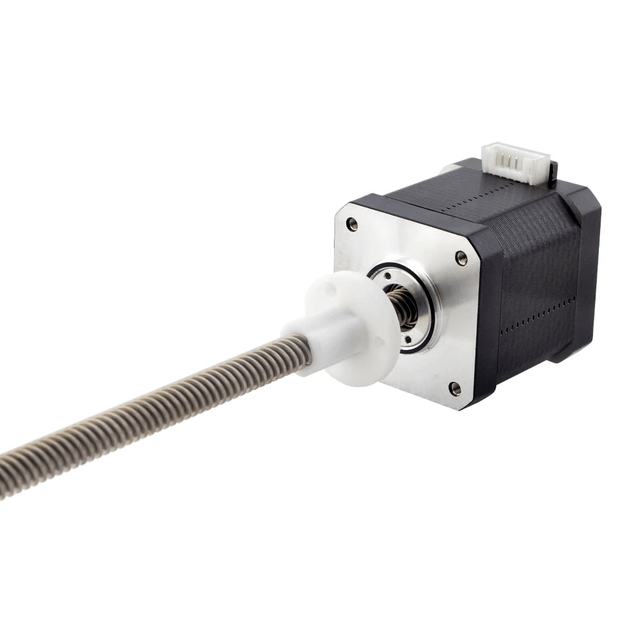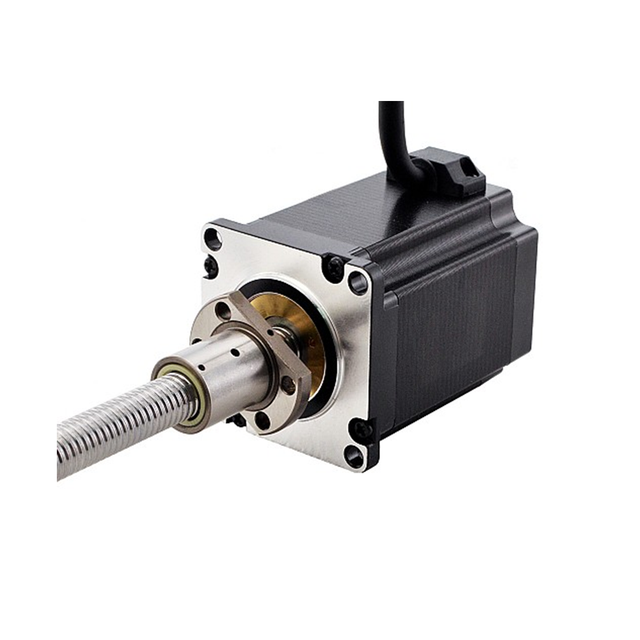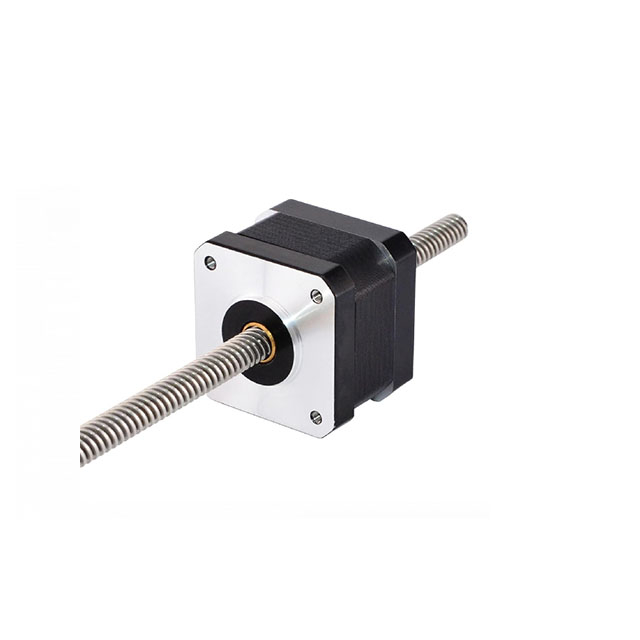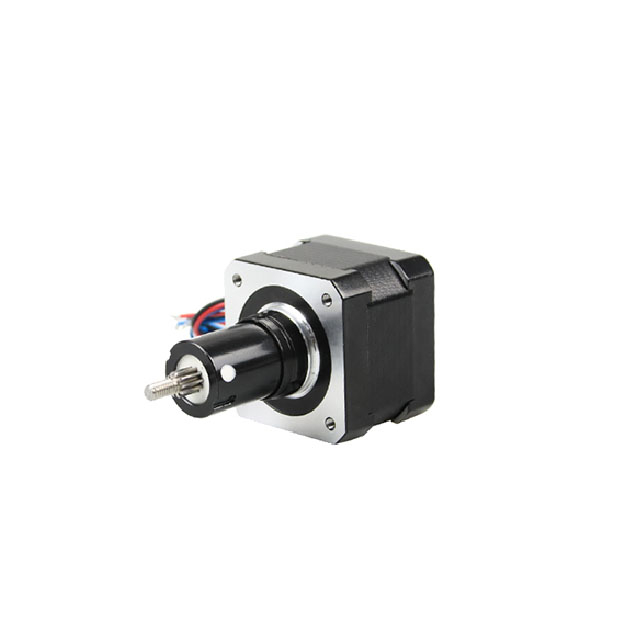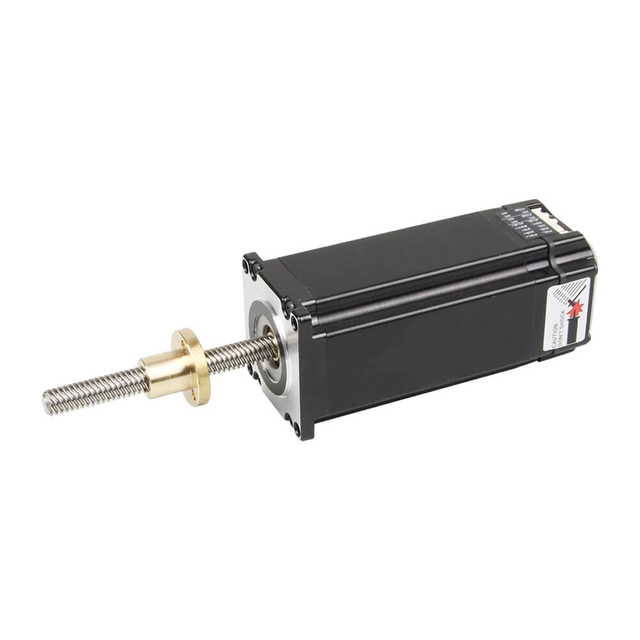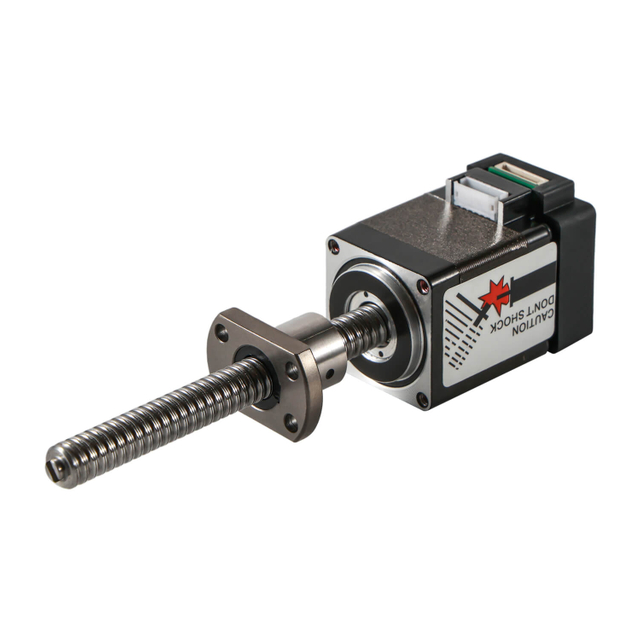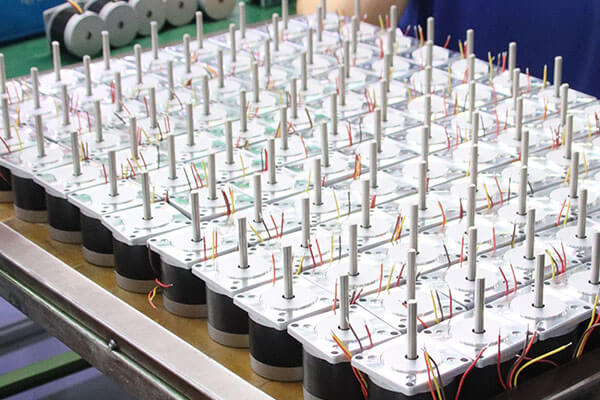
Selecting the right linear motor is one of the most critical decisions when designing high-precision automation systems. The motor you choose directly influences accuracy, speed, throughput, efficiency, footprint, and long-term reliability. In modern motion control, where industries demand ultra-fast response, nanometer-level repeatability, and maintenance-free operation, understanding how to choose the correct linear motor is essential.
This comprehensive guide provides an in-depth, engineering-focused look at the factors that determine the ideal linear motor for any application. We analyze performance characteristics, mechanical configurations, environmental considerations, system integration, and future scalability—ensuring you make the most optimized choice for your machine.
Understanding Linear Motor Fundamentals
Linear motors are at the core of today's most advanced automation systems, enabling motion with unmatched precision, speed, and efficiency. Unlike traditional rotary motors that rely on screws, belts, gears, or mechanical conversion, linear motors generate direct linear force without intermediate mechanisms. This ability to eliminate mechanical transmission makes them the preferred choice for high-performance industries such as semiconductor manufacturing, robotics, medical devices, precision machining, and metrology.
Below is a detailed, engineering-level explanation of the key fundamentals that define linear motor technology.
What Is a Linear Motor?
A linear motor is essentially a rotary motor that has been “unrolled” so that the stator (stationary part) and rotor (moving part) form a straight system. Instead of rotating, the system produces straight-line motion directly.
This direct-drive architecture results in:
Zero mechanical backlash
Higher accuracy and repeatability
Ultra-smooth motion across the entire stroke
Minimal wear and maintenance
Instant acceleration and high dynamic response
Linear motors function based on electromagnetic forces, following the same principles as traditional motors but applied linearly.
How Linear Motors Work
Linear motors operate according to Lorentz’s force law, where a current-carrying conductor interacts with a magnetic field to generate force:
F = B × I × L
Where:
In a linear motor, these interactions occur along the length of the motor, creating motion in a straight path.
There are two primary components:
1. The Primary (Forcer)
This is the part that receives electrical current. It houses:
2. The Secondary (Magnet Track)
A row of permanent magnets mounted on a steel base, establishing the magnetic field needed for force generation.
When current is applied to the coils, the motor produces force along the axis of the magnet track, resulting in seamless, direct linear movement.
Types of Linear Motors
1. Iron-Core Linear Motors
These motors use iron laminations in the forcer, which enhance magnetic coupling and produce very high force.
Characteristics:
High force density
Excellent thermal handling
Cost-effective for heavy-duty applications
Some cogging due to iron/magnet interaction
Best suited for:
2. Ironless Linear Motors
Ironless motors have coils encapsulated in epoxy and do not contain iron in the forcer.
Characteristics:
Best suited for:
3. Linear Stepper Motors
Linear stepper motors operate similarly to rotary steppers, with a toothed design and controlled incremental steps.
Characteristics:
Best suited for:
Key Performance Metrics of Linear Motors
When evaluating linear motors, engineers assess several critical performance attributes.
1. Continuous Force
The maximum force a motor can sustain indefinitely without overheating.
2. Peak Force
Short bursts of force for rapid acceleration or overcoming static loads.
3. Velocity and Acceleration
Linear motors can reach extremely high speeds and accelerations up to 10 g or more depending on the model.
4. Cogging and Force Ripple
Refers to fluctuations in force output:
5. Thermal Performance
Heat generation affects:
Precision
Lifespan
Servo performance
Proper thermal design ensures reliable system operation.
6. Position Accuracy and Repeatability
These depend on:
Encoder resolution
Servo control bandwidth
Motor smoothness
Linear motors inherently achieve higher precision than mechanical drive systems.
Advantages of Linear Motors Over Mechanical Drives
The shift from rotary-to-linear conversion systems to direct-drive linear motors offers numerous benefits:
1. No Mechanical Wear
No gears, belts, ball screws, or lubrication means significantly lower maintenance.
2. Highest Accuracy and Repeatability
Direct actuation eliminates backlash, hysteresis, and compliance.
3. Faster Throughput
High accelerations and rapid dynamic response maximize cycle times.
4. Ultra-Smooth Motion
Ideal for precision scanning and measurement.
5. Long Lifespan
Fewer moving parts mean longer reliability and lower total cost of ownership.
Common Applications of Linear Motors
Linear motors power the world's most advanced automation systems, including:
Wafer and PCB inspection tools
Laser cutting and engraving systems
High-speed pick-and-place robots
Industrial packaging lines
Precision medical imaging devices
Metrology and scanning stages
Automated microscopes
3D additive manufacturing systems
Their ability to combine extreme performance with long service life makes them invaluable in high-tech industries.
Conclusion
Understanding the fundamentals of linear motors is essential for selecting, designing, and optimizing modern motion systems. By eliminating mechanical transmission elements, linear motors provide unmatched precision, speed, reliability, and efficiency. Whether for high-force industrial applications or ultra-sensitive inspection and measurement tasks, linear motors deliver performance that far exceeds traditional motion mechanisms.
Key Factors in Selecting the Right Linear Motor
1. Define Required Force Output (Continuous and Peak)
Linear motors are rated in continuous force (sustained output) and peak force (short bursts). To choose the right model, determine:
Load mass
Acceleration and deceleration requirements
Motion profile (S-curve, trapezoidal, or custom)
External forces such as friction, drag, or gravity (especially in vertical applications)
Duty cycle
Iron-core motors deliver the highest force density, ideal for heavy payloads, high acceleration, and industrial automation.
Ironless motors provide lower force but deliver ultra-smooth movement and zero cogging, perfect for semiconductor, optical, and medical applications.
2. Precision Requirements: Resolution, Accuracy, and Repeatability
Motion precision is defined by several performance metrics:
Resolution: The smallest step the system can command
Accuracy: The difference between commanded and actual position
Repeatability: The ability to return to the same point consistently
Your application determines the precision class:
| Application Type | Required Precision | Recommended Motor |
| Semiconductor tools | Nanometer-level | Ironless |
| High-speed pick-and-place | High repeatability | Iron-core |
| Optical metrology | Sub-micron | Ironless |
| Packaging automation | Moderate | Iron-core or stepper |
Ironless linear motors are generally preferred for ultra-high precision due to:
3. Required Speed and Acceleration
Speed and acceleration determine machine throughput and productivity.
For high-speed scanning, inspection, or laser cutting, select a lightweight ironless linear motor.
For high acceleration and heavy loads, choose an iron-core motor with strong magnetic coupling.
For applications requiring controlled, incremental movements, consider linear stepper motors.
Also consider:
4. Motor Stroke Length and Mechanical Envelope
Linear motors can be designed for any stroke length, but the physical envelope must fit your machine layout.
Key considerations:
For very long strokes, segmented magnet tracks can reduce cost and simplify installation.
5. Thermal Behavior and Cooling Requirements
Linear motors generate heat under continuous operation. Excess heat affects:
Motor performance
Positioning accuracy
Encoder performance
Bearing life
Cooling options include:
Choose a linear motor with proper thermal headroom to ensure long-term reliability.
6. Environmental Conditions
Operating conditions have a significant impact on motor performance.
Important environmental factors include:
Dust and contamination
Humidity
Cleanroom requirements
Vacuum compatibility
Temperature fluctuations
Chemical exposure
Ironless linear motors are ideal for cleanrooms, while iron-core motors are better suited for general industrial environments.
7. Cogging and Force Ripple Tolerance
Certain applications demand ultra-smooth movement.
Choose ironless if your application involves:
8. Control System Compatibility
Linear motors require a servo drive and feedback system that supports:
High bandwidth control loops
Accurate current regulation
High-resolution encoders
Real-time communication protocols
Verify:
Encoder resolution and compatibility
Servo drive peak current rating
Fieldbus requirements (EtherCAT, CANopen, etc.)
PID tuning support
Safety features (STO, thermal protection)
9. Cost vs. Performance Optimization
Cost should be evaluated in terms of:
Initial motor and drive cost
Integration and mechanical costs
Energy consumption
Maintenance and downtime savings
Iron core motors offer high force at a cost-effective price.
Ironless motors cost more but deliver unmatched smoothness and precision.
Choose based on your application’s ROI, throughput, and lifetime cost expectations.
Choosing the Right Motor Type
Selecting the right linear motor type is one of the most important engineering decisions when developing any high-performance motion system. Each motor architecture—iron-core, ironless, or linear stepper—delivers unique advantages, trade-offs, and performance characteristics. Choosing the correct type ensures the system achieves optimal force, precision, speed, thermal stability, and cost efficiency.
Below is a complete, engineering-level guide to understanding and selecting the ideal motor type for your application.
Overview of Linear Motor Types
Three fundamental motor types dominate modern motion control:
Iron-Core Linear Motors
Ironless Linear Motors
Linear Stepper Motors
Each type excels under specific operating conditions. Understanding their construction, behavior, and performance is key to making an informed selection.
1. Iron-Core Linear Motors
What They Are
Iron-core linear motors use iron laminations in the forcer (primary), which significantly strengthens the magnetic field interaction. This results in exceptional force density, making them the preferred choice for heavy-duty applications.
Key Advantages
Highest continuous and peak force output
Excellent thermal conduction
Efficient use of copper and magnets
Most cost-effective per unit of force
Suitable for long travel lengths
Performance Characteristics
May exhibit cogging due to iron–magnet attraction
Higher mass in the forcer (compared to ironless types)
Capable of generating extremely high acceleration with heavy loads
Best Applications
Use iron-core linear motors when the system demands:
High payload capacity
Heavy-force machining
High-speed pick-and-place systems
CNC, packaging, and industrial automation
Applications where small cogging forces are tolerable
If your priority is raw force, industrial power, and cost-to-performance optimization, iron-core motors are the most effective choice.
2. Ironless Linear Motors
What They Are
Ironless linear motors use coils encapsulated without any iron in the moving part. The forcer “floats” between two magnet tracks or operates along a single track. This design eliminates magnetic attraction and cogging forces.
Key Advantages
Zero cogging for ultra-smooth motion
Lowest moving mass, enabling extreme acceleration
No magnetic attraction reduces bearing load
Best-in-class precision and scan stability
Performance Characteristics
Lower force density than iron-core motors
Higher cost due to complex magnet topology
Minimal heat generation on payload due to lighter forcer
Best Applications
Ironless linear motors are ideal when precision and smoothness matter most:
Semiconductor wafer handling
PCB and microelectronics inspection
Medical imaging and laboratory automation
Optical measurement systems (interferometers, profilometers)
Ultra-precise metrology and scanning stages
Lightweight robotic axes requiring high dynamic response
If your priority is smooth motion, nanometer-level precision, or cleanroom compatibility, ironless motors are the superior option.
3. Linear Stepper Motors
What They Are
Linear stepper motors convert the stepping action of traditional steppers into direct linear motion. They operate using electromagnetic poles and teeth and move in fixed increments (steps).
Key Advantages
Low cost and simple control
Open-loop operation (no feedback required)
No need for a servo drive
Excellent for repetitive, indexing tasks
Low maintenance
Performance Characteristics
Lower precision compared to servo-controlled linear motors
Limited speed and acceleration
Can miss steps if overloaded (unless closed-loop)
Best Applications
Choose linear stepper motors for applications where simplicity and cost-effectiveness matter:
If your priority is low cost, simplicity, and repeatable open-loop motion, linear steppers are a practical solution.
How to Choose the Right Motor Type
Below is a technical comparison to guide your selection based on performance priorities:
| Requirement | Best Motor Type | Reason |
| Highest Force | Iron-Core | Strong magnetic coupling |
| Zero Cogging / Smoothest Motion | Ironless | No iron in forcer |
| Lowest Moving Mass | Ironless | Lightweight coils |
| Most Cost-Effective | Iron-Core | Best force per dollar |
| Lowest Heat Transfer to Payload | Ironless | Minimal thermal load |
| High Precision Scanning | Ironless | Ultra-stable velocity |
| Simple, Low-Cost Positioning | Linear Stepper | No servo required |
| Best for Heavy Industrial Loads | Iron-Core | Robust and powerful |
| Cleanroom and Medical | Ironless | Dust-free, smooth operation |
Application-Based Selection Guide
Here's a quick engineering-oriented guide to help you select the best motor type for your industry:
Semiconductor / Electronics
✔ Ironless
Reason: Ultra-smooth motion, no cogging, high precision.
Industrial Automation
✔ Iron-Core
Reason: High force, cost-effective, rugged.
Medical and Laboratory
✔ Ironless
Reason: Low noise, smooth acceleration, precision control.
Packaging and High-Speed Pick-and-Place
✔ Iron-Core
Reason: Fast acceleration with heavy loads.
Optical Instruments / Metrology
✔ Ironless
Reason: Nanometer-resolution, low vibration.
Cost-Sensitive Automation
✔ Linear Stepper
Reason: Simple architecture, open-loop capability.
Conclusion
Choosing the right linear motor type is essential for optimizing your machine’s performance, efficiency, and long-term reliability. By understanding the strengths and limitations of iron-core, ironless, and linear stepper motors, you can align the motor architecture with your application’s force requirements, precision expectations, environmental conditions, and cost targets.
When properly selected, the right motor type becomes the cornerstone of a powerful, efficient, and future-proof motion system.
Step-by-Step Motor Selection Checklist
Use this structured approach to select the ideal linear motor:
Define load, acceleration, and cycle requirements
Calculate continuous and peak force needs
Determine required precision and dynamic performance
Evaluate environmental conditions
Choose appropriate motor type (iron-core, ironless, or stepper)
Ensure compatibility with encoder and servo drive
Consider thermal management and cooling options
Assess total installation space and travel length
Analyze lifetime cost and ROI
Validate with manufacturer force/speed curves
Conclusion: Selecting the Optimal Linear Motor
Choosing the right linear motor requires a deep understanding of your application's mechanical, electrical, and performance demands. By evaluating force requirements, precision needs, environmental factors, thermal characteristics, and integration compatibility, you can ensure your machine delivers maximum accuracy, speed, reliability, and efficiency.
When properly selected, a linear motor becomes the strongest foundation for world-class motion control performance.
English
العربية
Français
Русский
Español
Português
Deutsch
italiano
日本語
한국어
Nederlands
Tiếng Việt
ไทย
Polski
Türkçe
ພາສາລາວ
ភាសាខ្មែរ
Bahasa Melayu
ဗမာစာ
Filipino
Bahasa Indonesia
magyar
Română
Čeština
Монгол
қазақ
Српски
हिन्दी
فارسی
Slovenčina
Slovenščina
Norsk
Svenska
українська
Ελληνικά
Suomi
Հայերեն
עברית
Latine
Dansk
Shqip
বাংলা
Hrvatski
Afrikaans
Gaeilge
Eesti keel
Oʻzbekcha
latviešu
Azərbaycan dili
Български
Català


